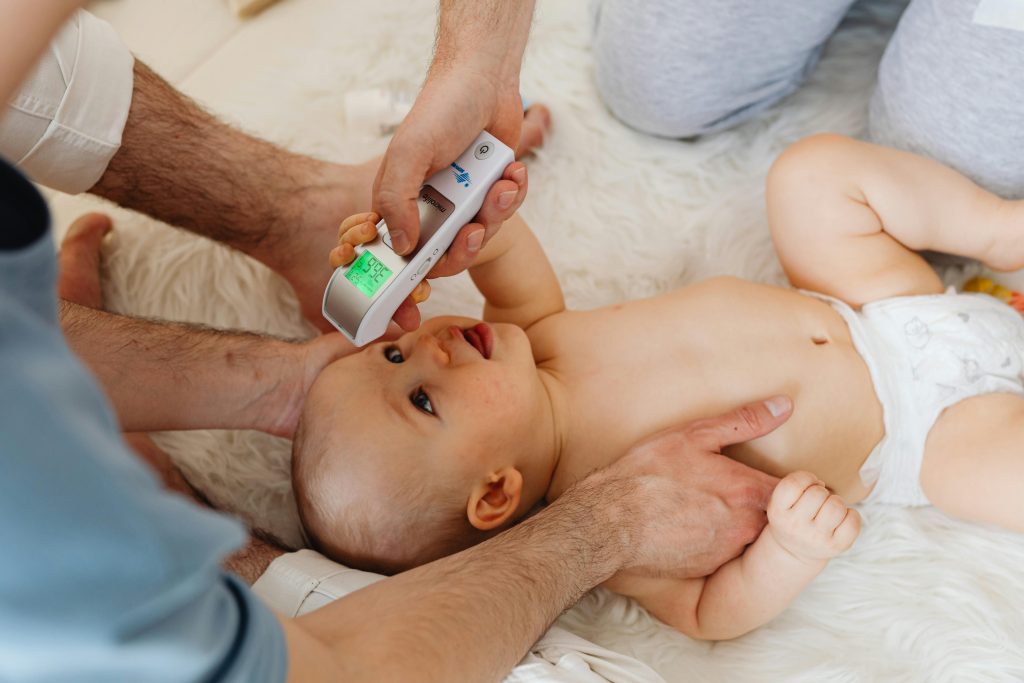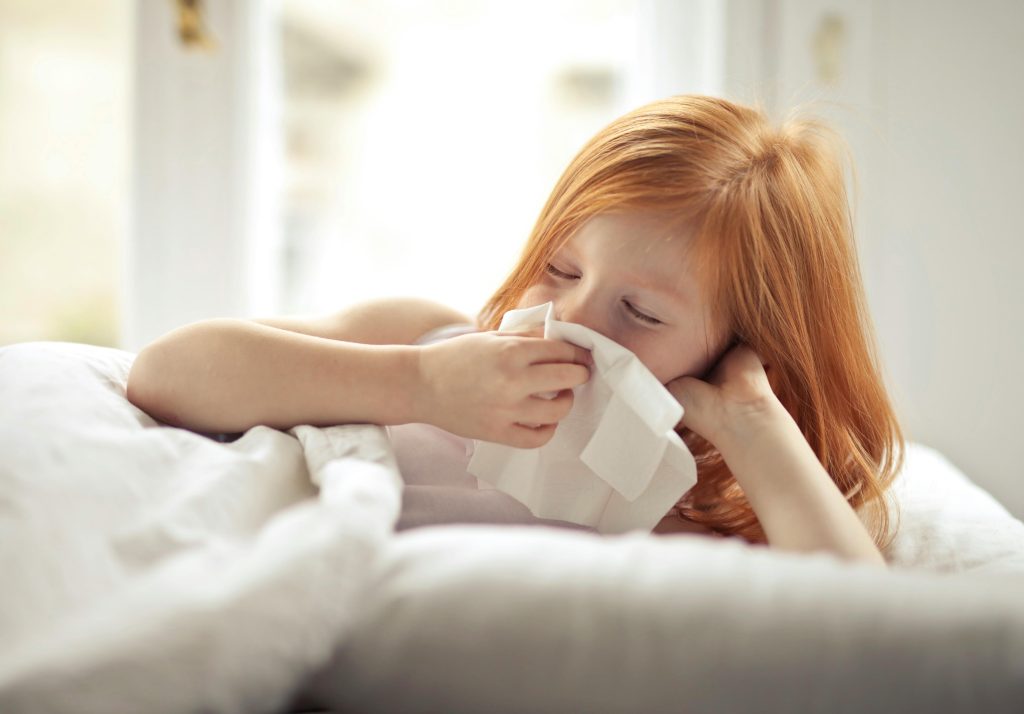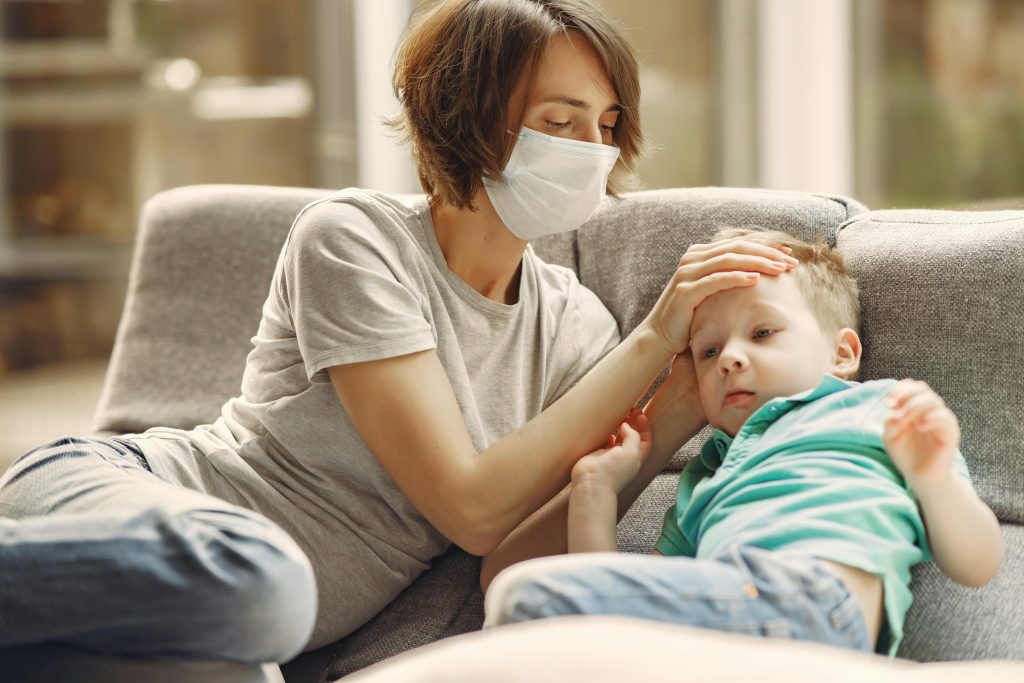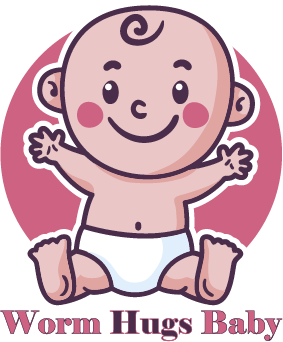
As a new parent, you’re filled with joy and excitement, but there’s also an undercurrent of worry. 😟 What if your baby gets sick? How will you know what’s wrong? It’s a fear that keeps many parents up at night, constantly checking on their little ones.
But here’s the thing: Baby illnesses are more common than you might think. In fact, most infants will experience several health issues in their first year alone. 🤒 The good news? Many of these conditions are easily treatable and not as scary as they might seem at first glance. Knowledge is power, and understanding these common illnesses can help you feel more confident and prepared as a parent.
In this post, we’ll explore 10 common baby illnesses that every parent should be aware of. From the ubiquitous common cold to more specific conditions like thrush and jaundice, we’ll cover what you need to know to keep your little one healthy and happy. So, take a deep breath, relax, and let’s dive into the world of baby health together. 👶💪
Common Cold in Babies

Recognizing symptoms
Common colds in babies can be distressing for both the infant and parents. It’s essential to recognize the symptoms early for proper care. Here are the typical signs:
- Runny or stuffy nose
- Sneezing
- Mild cough
- Slight fever (usually under 101°F or 38.3°C)
- Decreased appetite
- Irritability or fussiness
- Difficulty sleeping
| Symptom | Severity | Duration |
|---|---|---|
| Runny nose | Mild to moderate | 7-10 days |
| Cough | Mild | 2-3 weeks |
| Fever | Low-grade | 1-3 days |
Home remedies for relief
While there’s no cure for the common cold, several home remedies can help alleviate your baby’s discomfort:
- Use a nasal aspirator to clear mucus
- Run a cool-mist humidifier in the baby’s room
- Offer plenty of fluids to prevent dehydration
- Use saline drops to loosen nasal congestion
- Elevate the head of the crib slightly for easier breathing
When to consult a doctor
Most colds resolve on their own, but certain symptoms warrant medical attention:
- Fever above 100.4°F (38°C) in babies under 3 months
- Persistent fever for more than 3 days
- Difficulty breathing or rapid breathing
- Signs of dehydration (dry diapers, sunken fontanelle)
- Excessive sleepiness or irritability
Now that we’ve covered the common cold in babies, let’s move on to another frequent concern for parents: infant fever.
Infant Fever

Understanding normal body temperature
A baby’s normal body temperature can vary throughout the day. It’s crucial for parents to understand what constitutes a normal range:
| Age Group | Normal Temperature Range |
|---|---|
| 0-3 months | 97.5°F to 100.4°F (36.4°C to 38°C) |
| 3-6 months | 97.5°F to 100.4°F (36.4°C to 38°C) |
| 6-12 months | 97.0°F to 99.5°F (36.1°C to 37.5°C) |
Causes of fever in babies
Fever in infants can be triggered by various factors:
- Viral infections (most common)
- Bacterial infections
- Immunizations
- Teething (slight temperature increase)
- Overheating
Proper fever measurement techniques
Accurate temperature measurement is crucial for assessing an infant’s health:
- Rectal thermometer (most accurate for infants)
- Axillary (armpit) thermometer
- Temporal artery thermometer
- Tympanic (ear) thermometer (not recommended for babies under 6 months)
Safe fever management at home
When your baby has a fever, consider these safe management techniques:
- Keep the baby hydrated with frequent feedings
- Dress the baby in light clothing
- Maintain a comfortable room temperature
- Use a lukewarm compress on the forehead
- Give acetaminophen or ibuprofen as directed by a pediatrician
Remember, fever is often a sign that the body is fighting an infection. Always consult a healthcare provider if you’re concerned about your baby’s fever, especially for infants under 3 months old.
Gastroenteritis (Stomach Flu)

Identifying symptoms
Gastroenteritis, commonly known as stomach flu, can be distressing for both babies and parents. Key symptoms to watch for include:
- Diarrhea (watery, frequent stools)
- Vomiting
- Abdominal pain or cramps
- Fever (usually low-grade)
- Loss of appetite
- Irritability or fussiness
| Severity | Symptoms | Action |
|---|---|---|
| Mild | Occasional loose stools, slight fussiness | Monitor at home |
| Moderate | Frequent diarrhea, some vomiting, mild fever | Contact pediatrician |
| Severe | Persistent vomiting, high fever, signs of dehydration | Seek immediate medical attention |
Preventing dehydration
Dehydration is the most significant risk associated with gastroenteritis in babies. To prevent it:
- Offer frequent small sips of oral rehydration solution
- Continue breastfeeding if applicable
- Avoid sugary drinks or plain water for infants
- Monitor wet diapers (at least 6 per day is ideal)
Dietary adjustments during illness
During a bout of stomach flu, adjusting your baby’s diet can aid recovery:
- Gradually reintroduce foods using the BRAT diet:
- Bananas
- Rice (well-cooked)
- Applesauce
- Toast (for older infants)
- Avoid dairy products temporarily
- Offer easily digestible foods in small portions
As your baby recovers, slowly transition back to their regular diet. If symptoms persist or worsen, consult your pediatrician promptly. Remember, gastroenteritis is usually self-limiting, but proper care and attention can significantly ease your baby’s discomfort and promote faster recovery.
Ear Infections

Signs and symptoms
Ear infections in babies can be challenging to identify, but certain signs can alert parents. Common symptoms include:
- Tugging or pulling at the ear
- Increased irritability or fussiness
- Difficulty sleeping
- Fever (especially in infants and younger children)
- Fluid draining from the ear
- Balance problems or clumsiness
- Hearing difficulties or failure to respond to quiet sounds
Risk factors
Several factors can increase a baby’s likelihood of developing ear infections:
| Risk Factor | Description |
|---|---|
| Age | Infants and young children are more susceptible |
| Anatomy | Shorter, more horizontal Eustachian tubes |
| Bottle-feeding | Especially when lying down |
| Secondhand smoke | Exposure increases risk |
| Family history | Genetic predisposition |
| Weakened immune system | More vulnerable to infections |
Treatment options
Treatment for ear infections in babies may include:
- Watchful waiting: For mild cases, doctors may recommend monitoring the condition
- Pain relief: Over-the-counter pain relievers like acetaminophen or ibuprofen
- Antibiotics: Prescribed for bacterial infections, especially in severe cases
- Ear drops: To relieve pain and inflammation
Prevention strategies
To reduce the risk of ear infections in babies:
- Breastfeed if possible, as it boosts immunity
- Keep vaccinations up to date
- Avoid secondhand smoke exposure
- Practice good hygiene to prevent spread of germs
- Hold baby upright during bottle-feeding
- Limit pacifier use, especially after 6 months of age
Now that we’ve covered ear infections, let’s move on to another common respiratory illness affecting infants: Respiratory Syncytial Virus (RSV).
Respiratory Syncytial Virus (RSV)

Understanding RSV and its impact
Respiratory Syncytial Virus (RSV) is a common respiratory infection that can be particularly severe in infants and young children. This highly contagious virus affects the lungs and breathing passages, causing inflammation and mucus buildup. RSV can lead to more serious conditions such as bronchiolitis or pneumonia, especially in premature babies or those with weakened immune systems.
| Age Group | Risk Level | Potential Complications |
|---|---|---|
| 0-6 months | High | Bronchiolitis, Pneumonia |
| 6-12 months | Moderate | Wheezing, Difficulty breathing |
| 1-2 years | Lower | Mild cold-like symptoms |
Recognizing severe cases
Parents should be vigilant for signs of severe RSV infection, which may include:
- Rapid or labored breathing
- Bluish color around the lips or fingertips
- Decreased activity or lethargy
- Poor feeding
- Persistent coughing or wheezing
If any of these symptoms are observed, immediate medical attention is crucial.
Treatment and management
While there’s no specific cure for RSV, treatment focuses on managing symptoms and supporting the child’s recovery:
- Ensure adequate hydration
- Use saline drops and suction to clear nasal passages
- Utilize a cool-mist humidifier to ease breathing
- Administer acetaminophen or ibuprofen for fever (as directed by a healthcare provider)
In severe cases, hospitalization may be necessary for oxygen therapy or intravenous fluids. Prevention is key, including frequent handwashing and limiting exposure to infected individuals during RSV season.
Diaper Rash

A. Common causes
Diaper rash is a common concern for parents of infants and toddlers. Understanding the causes can help in prevention and treatment. Here are the most frequent culprits:
- Prolonged exposure to wet or soiled diapers
- Friction from tight-fitting diapers
- Introduction of new foods or changes in diet
- Sensitive skin or allergic reactions to diaper materials
- Yeast or bacterial infections
| Cause | Description |
|---|---|
| Moisture | Prolonged contact with urine or feces |
| Friction | Chafing from diaper or clothing |
| Diet | New foods can change stool composition |
| Sensitivity | Reaction to diaper materials or wipes |
| Infections | Overgrowth of yeast or bacteria |
B. Effective prevention methods
Preventing diaper rash is often easier than treating it. Here are some proven methods:
- Change diapers frequently
- Clean the diaper area gently but thoroughly
- Allow the skin to air dry before putting on a new diaper
- Apply a barrier cream or ointment
- Choose breathable, absorbent diapers
C. Home remedies and treatments
When diaper rash occurs, these home remedies can provide relief:
- Increase diaper-free time to allow air circulation
- Use warm water and a soft cloth for cleaning instead of wipes
- Apply over-the-counter zinc oxide cream
- Consider using cornstarch to keep the area dry
- For persistent rashes, try an antifungal cream (after consulting a pediatrician)
Remember, if the rash persists or worsens, it’s essential to consult a healthcare professional. They may recommend medicated treatments or identify underlying conditions causing the rash.
Colic

A. Defining colic and its symptoms
Colic is a common yet perplexing condition that affects many infants, typically within the first few months of life. It’s characterized by intense, prolonged crying episodes that occur for no apparent reason. To be diagnosed with colic, an infant must exhibit the following symptoms:
- Crying for more than 3 hours a day
- At least 3 days a week
- For at least 3 weeks
The crying often follows a pattern, typically occurring in the late afternoon or evening. Other symptoms may include:
- Flushed face
- Clenched fists
- Arched back
- Pulled-up legs
- Tense abdomen
| Colic Characteristics | Description |
|---|---|
| Age of onset | Usually 2-3 weeks old |
| Peak intensity | Around 6-8 weeks |
| Duration | Typically resolves by 3-4 months |
| Frequency | Affects 10-40% of infants |
B. Coping strategies for parents
Dealing with a colicky baby can be emotionally and physically draining. Here are some strategies to help parents cope:
- Practice the “5 S’s”:
- Swaddling
- Side/stomach position (when awake)
- Shushing
- Swinging
- Sucking
- Create a calm environment:
- Dim lights
- Reduce noise
- Use white noise machines
- Try different soothing techniques:
- Gentle rocking or bouncing
- Warm baths
- Infant massage
- Take care of yourself:
- Share caregiving duties
- Take short breaks
- Seek support from family and friends
C. When to seek medical advice
While colic is generally not harmful, it’s important to consult a healthcare provider if:
- Crying is accompanied by fever, vomiting, or diarrhea
- Baby isn’t eating or gaining weight properly
- Crying persists beyond 4 months of age
- You’re feeling overwhelmed or unable to cope
Remember, colic is temporary. With patience and support, both parents and babies can navigate this challenging phase.
Thrush

Identifying oral thrush in babies
Oral thrush in babies is characterized by white, creamy patches on the tongue, inner cheeks, and sometimes the gums. These patches may resemble cottage cheese and can’t be easily wiped away. Other signs include:
- Fussiness during feeding
- Difficulty swallowing
- Redness or soreness in the affected areas
Causes and risk factors
Thrush is caused by an overgrowth of the Candida fungus, which naturally exists in small amounts in the mouth. Several factors can increase the risk of thrush in infants:
- Weakened immune system
- Recent antibiotic use
- Mothers with yeast infections during breastfeeding
| Risk Factor | Description |
|---|---|
| Immune System | Underdeveloped or weakened immune systems are more susceptible |
| Antibiotics | Disrupt the natural balance of bacteria in the mouth |
| Breastfeeding | Yeast can be passed between mother and baby during feeding |
Treatment options
Treatment for oral thrush in babies typically involves antifungal medications. Common approaches include:
- Antifungal gel or drops: Applied directly to the affected areas
- Oral medication: For more severe cases
- Proper hygiene: Sterilizing bottles, pacifiers, and breast pumps
It’s essential to consult a pediatrician for proper diagnosis and treatment. In most cases, thrush clears up within a couple of weeks with appropriate care. Parents should also be aware that thrush can sometimes recur, so maintaining good oral hygiene practices is crucial for prevention.
Eczema in Infants

Recognizing eczema symptoms
Eczema in infants can be distressing for both babies and parents. Identifying the symptoms early is crucial for effective management. Common signs include:
- Red, dry, and itchy patches on the skin
- Small bumps that may ooze or crust over
- Thickened, scaly skin in affected areas
Eczema typically appears on the face, scalp, or limbs in infants. It’s important to note that symptoms can vary from mild to severe.
Triggers and allergens to avoid
Understanding potential triggers can help minimize flare-ups. Here’s a list of common eczema triggers in babies:
- Harsh soaps and detergents
- Certain fabrics (e.g., wool or synthetic materials)
- Environmental allergens (dust mites, pet dander)
- Food allergens (dairy, eggs, nuts)
- Extreme temperatures or humidity
| Trigger Category | Examples | Prevention Tips |
|---|---|---|
| Skincare Products | Fragranced soaps, bubble baths | Use mild, fragrance-free products |
| Fabrics | Wool, polyester | Choose soft, breathable fabrics like cotton |
| Environment | Dust, pollen | Regular cleaning, air purifiers |
| Food | Cow’s milk, eggs | Consult a pediatrician for dietary advice |
Skincare routines for babies with eczema
Establishing a gentle skincare routine is essential for managing infant eczema. Key steps include:
- Daily bathing with lukewarm water (no more than 10 minutes)
- Using fragrance-free, hypoallergenic cleansers
- Patting skin dry gently (avoid rubbing)
- Applying a thick, fragrance-free moisturizer immediately after bathing
- Keeping baby’s nails short to prevent scratching
Medical treatments
When home care isn’t enough, medical interventions may be necessary. Options include:
- Topical corticosteroids for reducing inflammation
- Antihistamines to relieve itching
- Prescription emollients for intensive moisturizing
- In severe cases, oral medications or light therapy
Always consult a pediatrician before starting any medical treatment for infant eczema. They can provide personalized advice and monitor your baby’s progress.
Jaundice

Understanding newborn jaundice
Newborn jaundice is a common condition that affects approximately 60% of full-term infants and 80% of premature babies. It occurs when there’s an excess of bilirubin, a yellow pigment produced during the normal breakdown of red blood cells. In newborns, the liver may not be mature enough to efficiently process bilirubin, leading to a yellowish tint in the skin and eyes.
Risk factors and complications
Several factors can increase the risk of jaundice in newborns:
- Premature birth
- Blood type incompatibility between mother and baby
- Breastfeeding difficulties
- Certain genetic conditions
While most cases of jaundice are harmless, severe untreated jaundice can lead to serious complications:
| Complication | Description |
|---|---|
| Kernicterus | Brain damage due to high bilirubin levels |
| Hearing loss | Permanent damage to auditory nerves |
| Cerebral palsy | Motor function impairment |
Treatment methods
Treatment for jaundice depends on its severity and the baby’s age. Common approaches include:
- Phototherapy: Exposing the baby to special blue light that helps break down bilirubin
- Frequent feedings: Encouraging regular breastfeeding or formula feeding to help eliminate bilirubin through bowel movements
- Exchange transfusion: In severe cases, replacing the baby’s blood with donor blood to quickly reduce bilirubin levels
Follow-up care
After initial treatment, it’s crucial to monitor the baby’s progress:
- Regular check-ups with the pediatrician
- Bilirubin level tests as recommended
- Continued observation for signs of jaundice at home
With proper care and monitoring, most babies with jaundice recover fully without any long-term effects. As we move on to discuss other common baby illnesses, it’s important to remember that early detection and prompt treatment are key to ensuring your baby’s health and well-being.

As parents, being informed about common baby illnesses empowers you to provide the best care for your little one. From the common cold to jaundice, understanding these conditions helps you recognize symptoms early and seek appropriate medical attention when necessary. Remember that while many of these illnesses are manageable at home, it’s crucial to consult your pediatrician if you have any concerns or if symptoms worsen.
Equip yourself with knowledge, trust your instincts, and don’t hesitate to reach out to healthcare professionals. Your baby’s health and well-being are paramount, and being prepared for these common illnesses will help you navigate the exciting journey of parenthood with greater confidence and peace of mind.





